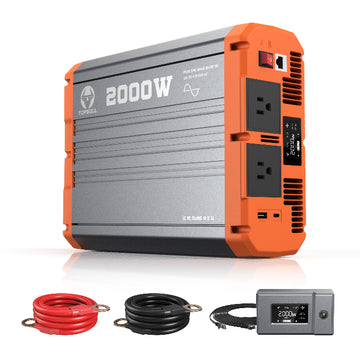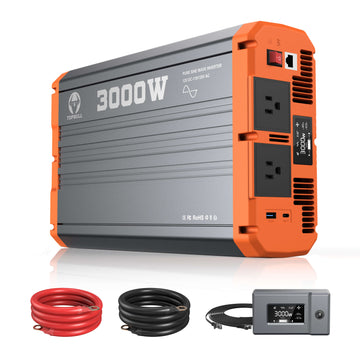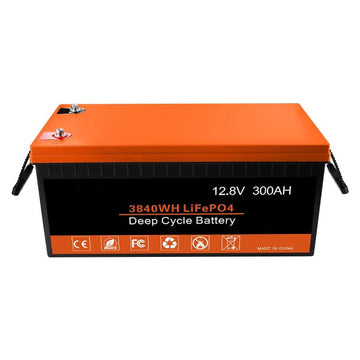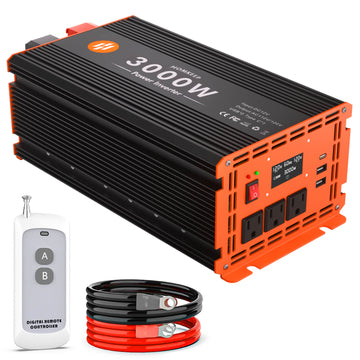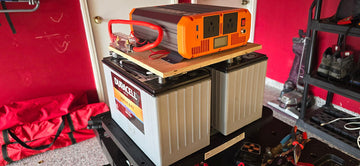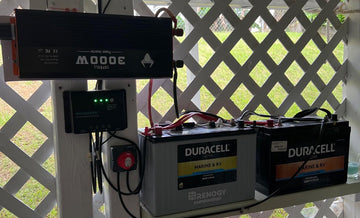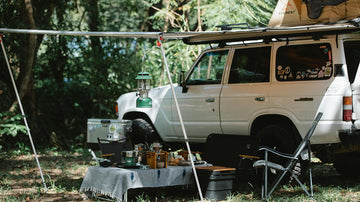Table of contents:
Bifacial solar panels are able to receive sunlight from both the front and the back at the same time, significantly increasing the efficiency of energy capture. With bifacial photovoltaic panels, we can increase our power generation by approximately 10 to 20 per cent. Bifacial solar panels also offer many advantages over conventional solar panels. In this article, we will provide a comprehensive introduction to bifacial solar panels, from the definition and working principle to the advantages and disadvantages, installation methods, and a comparison with single-sided solar panels, as well as their performance in different application scenarios, to reveal the attraction of this innovative technology for you.
What is Bifacial Solar Panel
Bifacial solar panel is a kind of advanced solar photovoltaic product, which is unique in that it can absorb and convert sunlight into electricity from the front and the back at the same time. Traditional single-sided solar panels mainly rely on their front side to receive sunlight for photovoltaic conversion, while bifacial solar panels can capture reflected light from the ground or scattered light from other objects through their back side on top of that, thus realising double-sided power generation.
How bifacial solar panels work
Bifacial solar panels work basically the same as traditional solar panels .The working principle of bifacial solar panels is mainly based on the photovoltaic effect, allowing them to capture and convert solar energy from two surfaces. Here are the key elements of their working principle:
Photovoltaic effect:
The core principle of bifacial solar panels is the photovoltaic effect, which means that when light strikes a semiconductor material (e.g. silicon), electrons and holes are created, resulting in an electric current. Whether on the front or the back, the panel generates electricity whenever light strikes it.
Front and back side light capture:
- Front capture: As with traditional single-sided panels, the front of a double-sided panel receives light directly from the sun.
- Backside Capture: The design of double-sided panels allows the backside to receive reflected and scattered light as well. Especially in environments with reflective materials (e.g. water, white or brightly coloured ground), reflected light can significantly increase the energy output of the panel.
Transparent encapsulation
Bifacial panels often use a transparent encapsulation material that allows light to reach the back of the panel unobstructed. This maximises light entry.
Increased efficiency
The overall photovoltaic conversion efficiency of the panel is increased due to the double-sided design. Depending on the installation environment and conditions, double-sided panels can generate 10 to 20 percent more electricity than single-sided panels.
Adaptable
Bifacial panels perform well in different installation environments, whether it is ground, roof or tracking system, and are able to capture sunlight effectively.
Through the above principles, bifacial solar panels become an efficient renewable energy solution that can effectively increase energy utilisation.
Advantages and disadvantages of bifacial solar panels
Bifacial solar panels show their unique advantages and disadvantages in many ways compared to traditional single-sided solar panels. The following is a detailed analysis of their advantages and disadvantages:
Advantages
- Higher power generation efficiency:Bifacial solar panels are able to absorb sunlight from both the front and the back to generate electricity, so their power generation efficiency is significantly higher than that of single-sided solar panels. According to statistics, the power generation efficiency of bifacial solar panels can be increased by 10% to 20% compared to single-sided solar panels. This is mainly due to the effective use of reflected and scattered light.
- Longer service life:Since bifacial solar panels are designed with multiple layers of solar cells, this design provides better protection against UV rays and oxidation, thus extending their lifespan. Compared to traditional solar panels, bifacial solar panels have a longer lifespan, reducing the frequency of replacement and maintenance.
- Stronger environmental adaptability:Bifacial solar panels show greater adaptability in different environmental conditions. For example, at high altitude and under cloudy weather, their power generation efficiency will not be affected too much. This feature makes bifacial solar panels work effectively in a wide range of geographical and climatic conditions.
- Wider application scenarios:Bifacial solar panels offer greater flexibility and can be installed on a wide range of surfaces, such as flat roofs, car park canopies, pool decks, etc. This flexibility allows bifacial solar panels to be used in a wide range of applications in residential, commercial, agricultural, and special environments (e.g., deserts, snow).
- Improved energy efficiency:Solar cells themselves are a clean energy source, and by increasing the efficiency of power generation, bifacial solar panels further increase the efficiency of energy use and reduce the negative impact on the environment.
Disadvantages
- Higher manufacturing cost:Bifacial solar panels have a relatively high manufacturing cost, which is mainly due to their multi-layer solar cell design and more complex production process. As a result, their market price is also relatively high, which may increase the user's initial investment cost.
- Takes up more space:Since bifacial solar panels require two sides to generate electricity, their area is relatively large. In an installation environment with less space, it may be somewhat limited. In addition, its heat dissipation needs to be taken into account during installation to ensure that it works properly.
- Installation and maintenance difficulties:Installation and maintenance of bifacial solar panels may be more challenging than single-sided solar panels. Due to the complexity of their structure, more specialised technicians are required for installation and maintenance. Factors such as orientation and angle also need to be taken into account during installation to ensure that they receive the maximum amount of sunlight.
Bifacial solar panels have significant advantages in terms of power generation efficiency, service life, environmental adaptability and application scenarios, but their disadvantages, such as higher manufacturing costs, larger footprint, and difficulty in installation and maintenance, also need to be fully considered by users before use.
Application Scenarios of Bifacial Solar Panel
Bifacial solar panels are suitable for a wide range of application scenarios due to their unique design and efficient power generation capability. The following are some of the main application scenarios:
- Large-scale photovoltaic power plants: In large-scale solar power projects, bifacial panels can significantly improve the power generation efficiency of the power plant, especially suitable for vast open areas, such as deserts and farmlands.
- Rooftop solar systems : Installing bifacial panels on rooftops in cities and villages can make full use of reflected light, especially in environments with white or light-coloured roofs, to improve power generation efficiency.
- Carports and sunrooms: Bifacial panels can be applied to structures such as carports, sunrooms or awnings, which not only provide parking and recreational space, but also capture light efficiently through the bifacial design.
- Alongside roads and railways: Installing bifacial panels on both sides of a road or railway to take advantage of the light reflected from the road surface can increase the amount of power generated without taking up additional land resources.
- Agricultural photovoltaics: Combining photovoltaic power generation with agricultural cultivation (e.g. "agro-photovoltaics") in agricultural fields can be applied with bifacial solar panels, which not only provide electricity, but also shade and protection for the crops, as well as taking advantage of the reflected light from the soil.
- Floating solar power station on water surface: installing bifacial panels on water surface (e.g. reservoirs, lakes) can make full use of light reflected from the water surface to enhance power generation, and at the same time reduce water surface evaporation, which helps to protect water quality.
- Building Integrated Photovoltaic (BIPV): Using bifacial panels as part of the façade material in building design not only generates electricity, but also achieves a combination of architectural aesthetics and energy efficiency.
- Wilderness and remote areas: Installing bifacial solar panels in remote areas and in the wilderness can maximise the return on investment of PV power generation in a limited space.
These application scenarios fully demonstrate the adaptability and efficiency of bifacial solar panels in a wide range of environments, making them an important part of modern renewable energy solutions.
Prices for double sided solar panels
Price Range
In the U.S. market, the price of bifacial solar panels is usually influenced by several factors, including product specifications, quality, brand, market demand, supply chain conditions, and policy environment. Generally speaking, the price of bifacial solar panels will be higher than that of traditional single-sided solar panels due to their higher power generation efficiency and more complex production process.
Up to now, the price of bifacial solar panels is generally between $0.3 and $0.5 per watt (W), but the exact price will change according to the specifications of the product and market demand. For example, some high-end, high-efficiency bifacial solar panels may cost more.
Influencing Factors
- Product specifications and quality: The price of bifacial solar panels varies greatly with different specifications and quality. Generally speaking, the higher the power and efficiency, the higher the price of the product will be correspondingly higher.
- Brand: Bifacial solar panels of well-known brands usually have higher quality assurance and after-sales service, so the price will be relatively higher.
- Market demand: Changes in market demand will directly affect the price of bifacial solar panels. If the market demand is strong, the price may increase; conversely, if the market demand is insufficient, the price may decrease.
- Supply chain status: The stability and cost of the supply chain will also affect the price of bifacial solar panels. For example, fluctuations in raw material prices and increases in production costs may lead to changes in product prices.
- Policy environment: Government subsidy policies, tax incentives, etc. will also have an impact on the price of bifacial solar panels. For example, the IRA bill introduced by the U.S. government provides high subsidies for PV companies, which may reduce the price of U.S.-based production of bifacial solar panels to a certain extent.
Caveats
Due to the volatility of market prices, the above price ranges are for reference only. When making actual purchases, consumers are advised to make choices and comparisons based on their own needs and budgets, combined with the actual market conditions. At the same time, attention should also be paid to the choice of formal channels of purchase to ensure the quality of the product and after-sales service.
How to Install Bifacial Solar Panels
The process of installing bifacial solar panels is similar to that of regular single-sided solar panels, but due to their double-sided design, there are some special considerations that need to be taken into account when installing them in order to ensure optimal power generation efficiency. Below are the steps for installing bifacial solar panels:
1. Planning and Design
- Evaluate the site: Choose a suitable location to ensure sufficient light and avoid shadow shading.
- Calculate Power Generation: Estimate potential power generation based on geographic location and solar radiation data.
- Determine the design: Design the PV system according to the available space and power generation needs, including the number of panels, arrangement, tilt angle, etc.
2. Selection of Racking System
- Double-sided racking: Choose a racking system that is suitable for double-sided panels, which usually requires the racking to leave enough space so that the sunlight can hit the top and bottom of the panels from multiple angles.
- Tilt angle: Consider setting an appropriate tilt angle to maximise light capture.
3. Safety Preparation
- Check equipment: Ensure that all equipment and accessories are well prepared, including battery panels, brackets, inverters, cables, connectors, etc.
- Safety measures: Wear appropriate personal protective equipment (e.g. helmet, gloves and goggles) to ensure construction safety.
4. Mounting Bracket
- Fixing bracket: Fix the bracket system to the ground or building according to the design scheme. Ensure that the brackets are firm and stable to withstand wind and other environmental factors.
5. Installation of double-sided battery panels
- Connecting the panels: Install the double-sided panels onto the bracket, usually arranging them from bottom to top and from one side to the other. When mounting, make sure that the reflective surface of the panels is facing a favourable environment (e.g. smooth ground or a body of water).
- Fixing the battery panels: make sure that the panels are firmly fixed to avoid loosening in stormy weather.
6. Electrical Connection
- Wiring: connect the panels to the inverter and battery storage system according to the electrical design of the PV system. Handle cables carefully to avoid short circuits or other electrical faults.
- Installation of the inverter: Install the inverter in a suitable location and ensure good ventilation to avoid overheating.
7. System Testing
- Checking Connections: Before energising the system, carefully check all electrical connections to ensure there are no errors.
- Test the system: After powering on, check the working status of the system to ensure that power generation is normal.
FAQ about Bifacial Solar Panels
Are bifacial solar panels better?
Yes, bifacial solar panels are generally more efficient because they capture sunlight from both the front and back sides, using reflected light to increase the total amount of power generated.
Are bifacial solar panels worth it?
It is worth it. Although the initial investment is higher, their increased power generation capacity and longer lifespan can lead to better long-term financial returns.
Can you put bifacial solar panels on your roof?
Yes, bifacial solar panels are suitable for installation on roofs, especially in sunny areas with well-supported reflective surfaces (e.g. white or smooth surfaces).
What is bifacial gain in solar panels?
Bifacial gain refers to the additional power output that a bifacial solar panel gains by capturing light reflected from the ground or the surrounding environment, which can often significantly increase the overall power generation.
What is the best orientation for bifacial solar panels?
The best orientation is usually south (in the northern hemisphere) or north (in the southern hemisphere) to receive the most direct sunlight, which in combination with an appropriate tilt angle can further optimise power generation efficiency.

